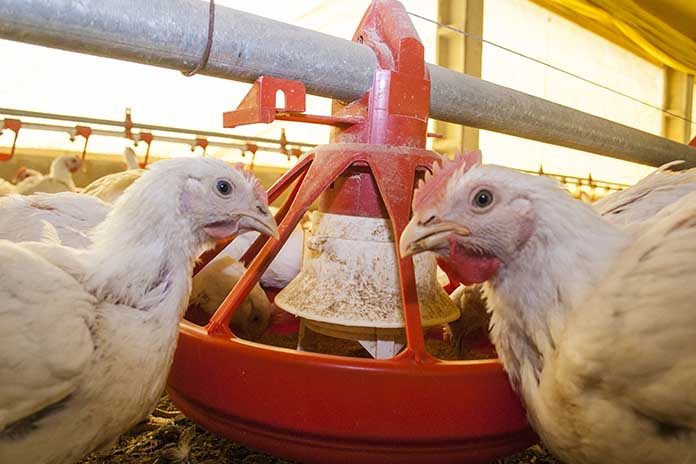
Energy (E) and amino acids (AA) are two of the most expensive components in broiler diets. There is no general consensus regarding the interaction of E and AA on broiler performance and this requires further investigation. Phosphorus (P) is the third most expensive diet component after E and AA (Woyengo and Nyachoti, 2011). Phosphorus plays a vital role in E and AA metabolism, and protein synthesis while P requirement has not been established with certainty. It was hypothesized that the requirements of digestible lysine (dLys, based on the ideal ratio as suggested by Baker and Han, 1994), AMEn and available P (avP) for broilers are not in the same proportion and these nutrients may interact with each other to affect broiler performance. To test this hypothesis, an experiment was conducted using a 3- factor-3-level Box-Behnken design that included dLys (9.5, 10.5, 11.5 g/kg), AMEn (12.77,13.19, 13.61 MJ/kg) and avP (3.0, 4.0, 5.0 g/kg) generating a total of 15 treatments with 5 replicates of 12 birds. A total of 1050 d-old Ross 308 male broiler chicks were fed a common starter diet (dLys 12.0 g/kg, AMEn 12.77 MJ/kg, avP 4.5 g/kg) up to d 14 and allocated to treatment diets from day 14-34. Response surface was fitted by first, second or third degree polynomial regressions in JMP statistical software v. 12.0.1.
Body weight gain (BWG) was described by a third-order equation (adj. R2 = 0.80, P<0.001) and was affected by dLys (linear and quadratic) AMEn (linear) and AMEn × avP. Increase in dLys increased BWG but increase in AMEn decreased BWG in the birds fed the low avP diet but had no effect on BWG in those fed the high avP diet. High dLys, low AMEn and low avP maximised BWG during 14-34 day. Similarly, FCR was described by a third-order equation (adj. R2 = 0.92, P < 0.001) and was affected by dLys (linear and quadratic), AMEn (linear), avP (linear) and AME × avP. Increase in dLys decreased FCR but increase in AMEn decreased FCR in the birds fed the low avP diet but had no effect on FCR in those fed the high avP diet. High dLys, low AMEn and high avP minimised FCR during 14-34 day. dLys had greatest influence on breast yield (adj. R2 = 0.47, P<0.001) where increasing dLys increased breast yield (linear) and breast yield percentage (linear and quadratic) but increasing AMEn decreased breast yield (linear) and breast yield percentage (linear). Similarly, increase in dLys decreased abdominal fat percentage but increase in AMEn increased abdominal fat percentage at both low and high avP levels with a more distinct effect on high avP level (R2 = 0.50, P<0.001).
In conclusion, dLys had the greatest influence on performance and carcass traits in broilers from 14-34 day post-hatch. Interactions between AMEn and avP for BWG, FCR and abdominal fat percentage were detected, however, no interactions were detected between dLys and AMEn or dLys and avP for these parameters. These results indicate that increasing dLys levels above current industry standard would improve broiler performance irrespective of AMEn of the diet.
References
Baker DH & Han Y (1994) Poult. Sci. 73: 1441-1447.
Woyengo TA & Nyachoti CM (2011) Can. J Anim. Sci. 91: 177-192.
From the Proceedings of the Australian Poultry Science Symposium

















